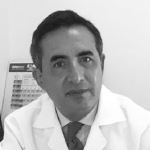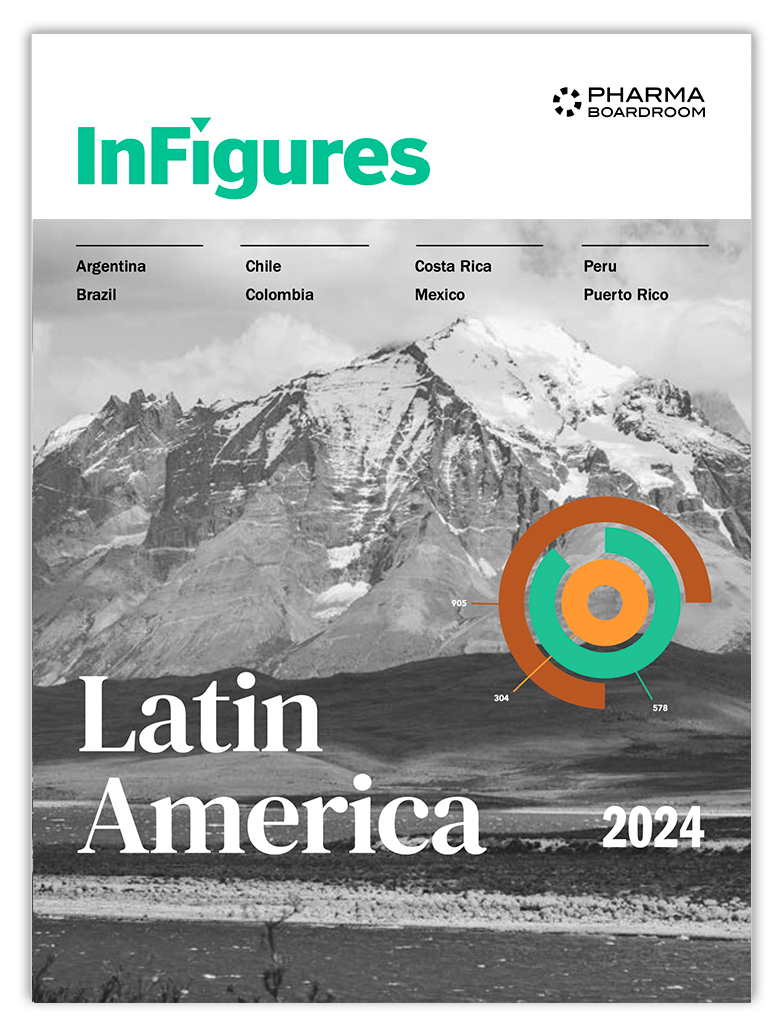Angel Guevara, molecular biologist and professor at the Central University of Ecuador (UCE), discusses Ecuador’s potential as a clinical trial destination, a diverse tropical country with high prevalence of infectious disease and educated healthcare professionals. He explains the differences between public and private healthcare services, notably from the point of view of quality and working capital cycle, as well as the benefits of an increase in public-private collaboration in scientific research.
Why is it interesting to study biology and parasitic diseases in Ecuador?
Ecuador is a tropical country with several geographical typologies, and diverse flora and fauna. This biodiversity is not only reflected in people in animals and in plants, it is also reflected in diseases. Given the country’s economic development and geographical location, parasitic diseases have a high prevalence in our country. More specifically, the lack of sanitation and access to clean water in some rural parts of the country accelerate the transmission of such tropical infections. Addressing these issues would require less politically oriented investments in healthcare to develop access to clean water and basic hygiene education.
Unfortunately, we have not been able to convert Ecuador’s epidemiological profile into an opportunity. With regards to the high prevalence rates of a wide array of tropical diseases, the country could have been a hub for clinical trials had it not been for its burdensome regulations. Indeed, pharmaceutical companies with a potential new product are racing against patent expiration delays to maximise the profitability of a new drug. Therefore, they cannot afford to be put on waiting lists by the government while sanitary authorities review the clinical trial application. Hopefully, the Ecuadorian authorities will realize the potential that clinical trials represent for Ecuadorians by providing cutting edge products to patients in need.
Mr. Moreno claimed that giving access to high quality healthcare to the poorest would be one of his presidential mandate’s priorities. At this point, do you think the government – the educational system, the university systems and the government – sees the life sciences industry as a strategic direction for the country’s future?
[Featured_in]
For ten years, former president Rafael Correa prioritized investments that gave the illusion healthcare was rapidly progressing in our country. Indeed, most of the public expenditure of health was directed towards the construction of visible health infrastructures such as hospitals. However, former president Correa did not allocate sufficient resources to related services, such as medical education and material to make these buildings operational. In fact, many of the hospitals that were built under his administration could not run properly because of the lack of equipment and qualified personnel.
Our president, Mr. Moreno took office in June 2017 and has not had time to address all the consequences of his predecessor’s politics, but it is nice to know that Moreno’s administration is making healthcare a priority. Hopefully he will develop investments in primary care, in the education of health professionals as well as in the equipment to run the facilities built by his predecessor.
What have been some of the recent reforms to guarantee the quality of service delivered by healthcare professionals?
[related_story]
One of the most recent reforms considering education, across the board, is the implementation of a leaving certificate test upon completion of one’s curriculum in higher education. More specifically, all students arriving to the end of their studies must undergo a final examination that certifies their competencies. This is particularly important in the case of medical students given the fact that they will be directly confronted with human beings, and responsible for their well-being. Previously, recent graduates would attend a year’s training in a healthcare facility under the supervision of trained doctors with no prior attestation of their ability to perform medical interventions. The implementation of a leaving certification is an excellent initiative that will further guarantee the professional abilities of our doctors. I am convinced rendering such tests compulsory in all fields is necessary considering that almost all professions deal with human beings.
What about the resources allocated to these people before they are evaluated on their competencies?
Over the course of my career at the Central University of Ecuador (UCE), one of the oldest in the country with 300 years existence, I have witnessed major improvements in the resources that are granted to the University. Indeed, as our experience in medical teaching improved, we were given the possibility to ameliorate the conditions in which students are trained. For instance, students now have the opportunity to practice medical interventions on dummies rather than on humans. This is also the case for students in the fields of nursery and bioanalytics. As teachers, we were also given additional means to conduct research projects with our students.
However, the country faces a shortage in specialized doctors. Indeed, many students do not have the opportunity to specialize after completing their general studies for two reasons. Firstly, despite the existence of several medical universities throughout the country, the availability of postgraduate courses is limited. Secondly, embarking on the journey of postgraduate studies is expensive and Ecuadorians do not always have the means to pursue additional studies. I believe the government could place agreements with universities to provide additional financial help to students looking forward to specializing. Of course, grants and equivalent scholarships exist but I think that the budget allocated to them should be increased to allow a larger portion of students to benefit from them.
From the patient perspective, healthcare access in the country is highly correlated to economic status. What could be done to address this issue?
The fact that poorer communities do not have as good access to healthcare as their more fortunate counterparts is undeniable. Although interaction between the public and private healthcare systems exists, I am positive extending the cooperation between these two systems could be beneficial for Ecuadorians. For instance, the government could cover the costs of care of public health affiliates whether they are received in a public or a private facility. Doing so would allow Ecuador to fully leverage the network of its healthcare facilities. Indeed, in the case of an emergency, a private facility is often the closest infrastructure one has access to. Nonetheless, this should not be done at the expense of those having contracted a private insurance.
As the quality supervisor in a private healthcare facility, what are the challenges the private sector is confronted to and what differences do you notice with the public sector?
The quality of attendance to the patient is paramount in the private sector given that he has paid for the service himself. Indeed, the private healthcare is more commercially driven than the public healthcare sector. If a client has paid for the services himself and is unsatisfied with the service you provided him, he is likely to be looking for somewhere else to be attended. Overtime, bad service will cause a facility to lose clients, in turn confronting it to financial issues. Most of the private healthcare facilities I know of have well integrated this concept to their functioning and deliver high quality service to their patients.
The consideration for quality should be the same in the public sector although it is clear that the amount of patients to cater to makes this task even more challenging. In cases where the patient cannot be taken care of promptly, one can imagine solutions to make the patient feel at ease while he is waiting for care. In general, I would highlight the necessity of educating our healthcare professionals about the value of providing a high-quality service to their patients.
Supply planning is another element affecting quality of service in healthcare facilities. In this regards, I assume that managers in private and public facilities have the same level of competency. However, it appears that the differences in the situations they are confronted to affects the quality of service they can deliver. More specifically, any hospital manager is confronted with purchasing decisions and guaranteeing an optimized availability of medical supplies to run the hospital. Though both managers in the private and in the public sectors are perfectly capable of developing a sound purchasing strategy through the use of statistics, managers in the public sector face an issue with the resource availability at a specific given time. In a nutshell, managers of the private sector can order supplies and pay for them immediately. Meanwhile, managers in the public sector are often subject to delays in receiving the financial resources from the government and therefore, cannot order the adequate supplies. As a result, supply shortages are more common in public facilities than they are in private facilities in Ecuador.
The delays found in public funding are also affecting other areas. For instance, academic medical research is also confronted with inability to fund its needs in a timely manner because the government is not delivering resources at the right time.
As an academic researcher, you were involved in a partnership with MSD. Could you comment on the current levels of collaboration between the private and public sectors in Ecuador? Also, what made your collaboration with MSD so successful?
It is very clear that both sides and Ecuadorian patients could benefit from increasing the current levels of collaboration between the private and the public sectors. Unfortunately, very few examples of successful collaboration between the academia and the pharmaceutical industry in Ecuador exist. Governmental policies aside, I believe this is partly a consequence of the mutual jealousy that exists between the two sides. One the one hand, academics claim they have the knowledge and genuine interest in serving the community. On the other hand, interests of pharmaceutical companies are commercially driven and they are the ones bringing the product to the patients. As a result, the academia is reluctant to share some of its data with the pharmaceutical industry and the pharmaceutical companies have little interest into funding research with limited commercial prospects.
Finding the right balance between commercial applicability and solving a problem for the community made our 14-year collaboration with MSD a success. Indeed, our area of focus was an infectious disease on the World Health Organisation’s (WHO) neglected tropical disease list, namely Onchocerciasis. Furthermore, it affected six countries in Latin America and more on the African continent. Finally, MSD had already found a commercial application to treat the disease using this drug in the veterinary sector. Therefore, the opportunity for MSD to collaborate with academia to find a commercial application of this drug in the human health field was interesting for them.
The human-level action in this project was another key. Rather than advising Ecuadorians to take this drug once a year, our research teams took the time to educate the populations on the project, drug and consequences of the disease. Consequently, we gained the involvement of our study groups which took the research to the next level. From a wider perspective, I would argue that the collaborative work and communications between institutions in the country, rather than isolated individual initiatives, will allow us to further propel the development of healthcare in Ecuador.







